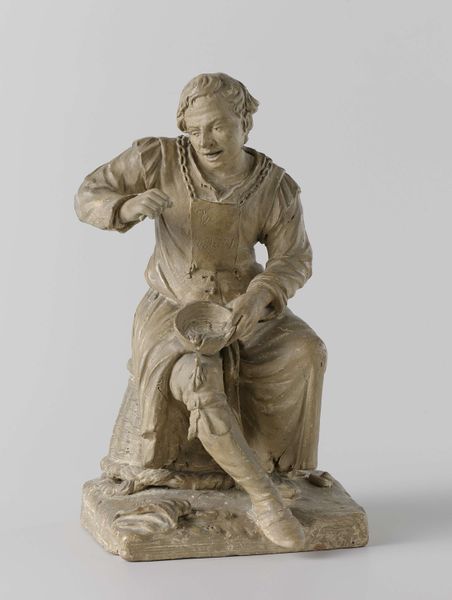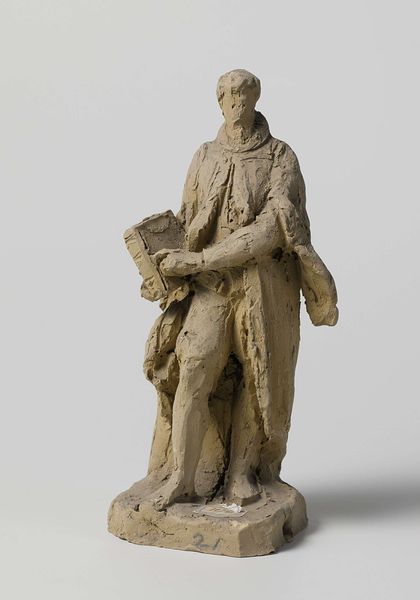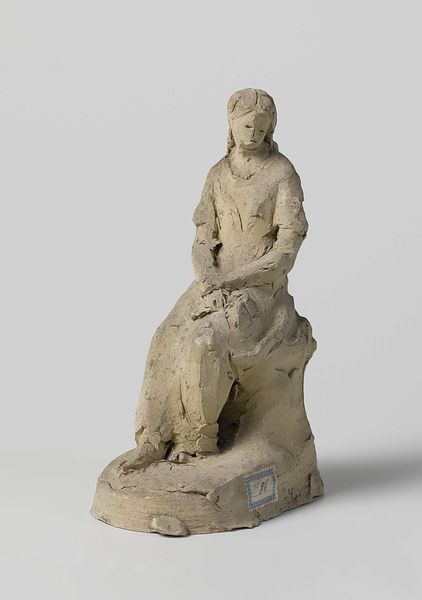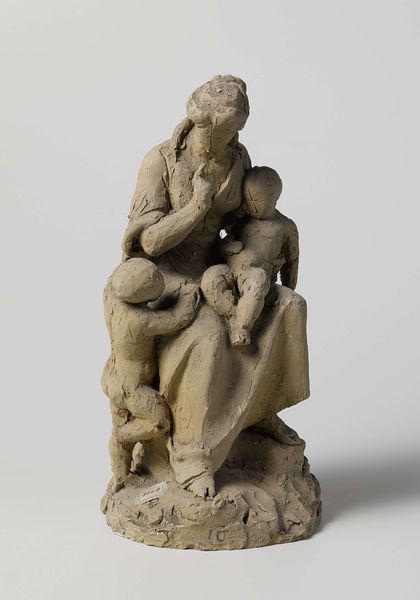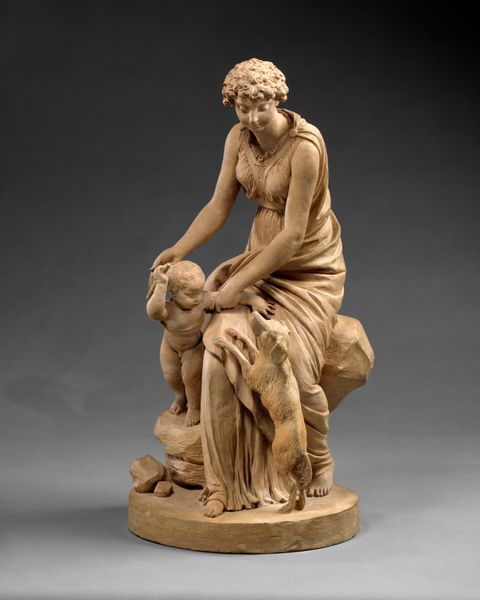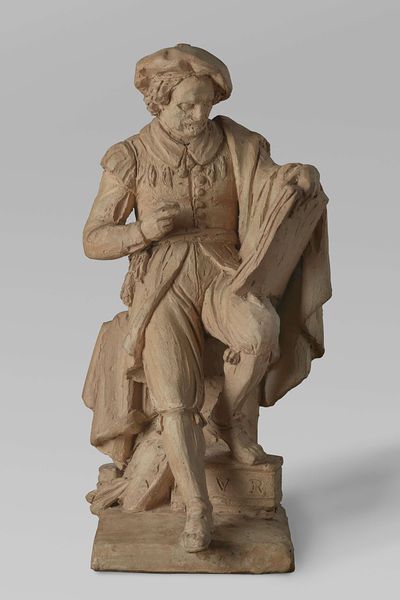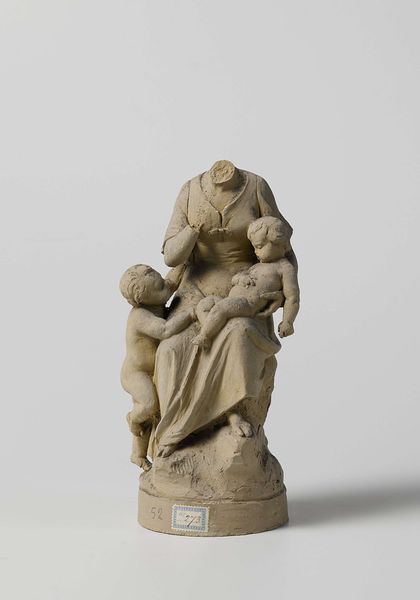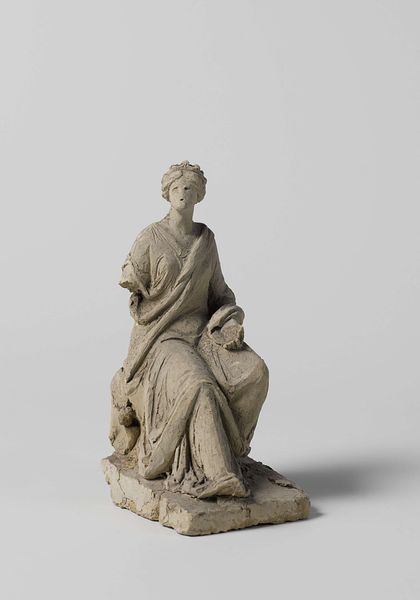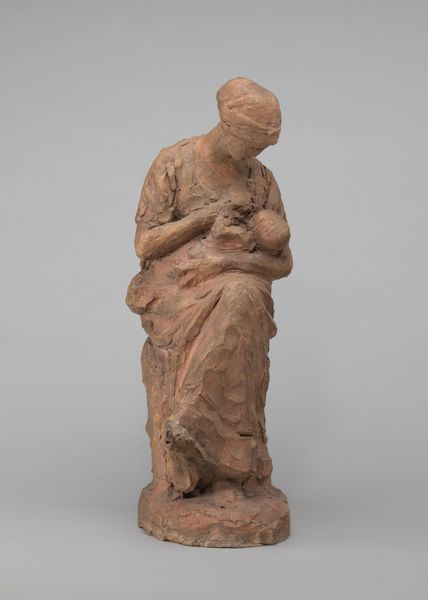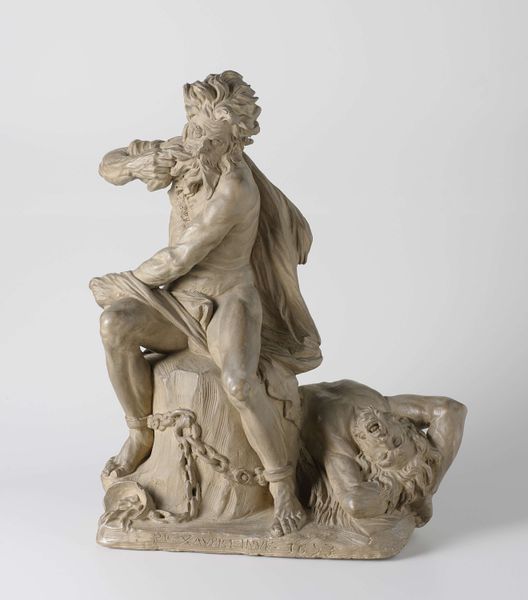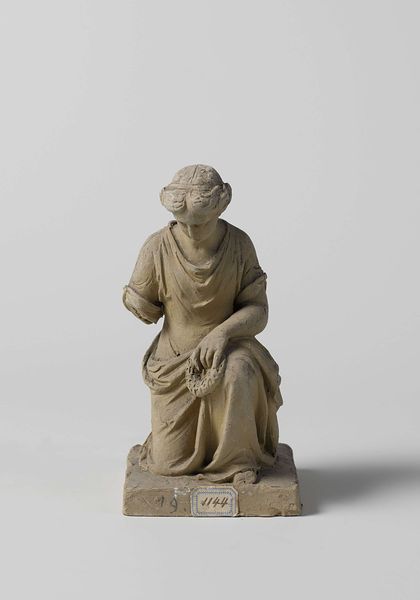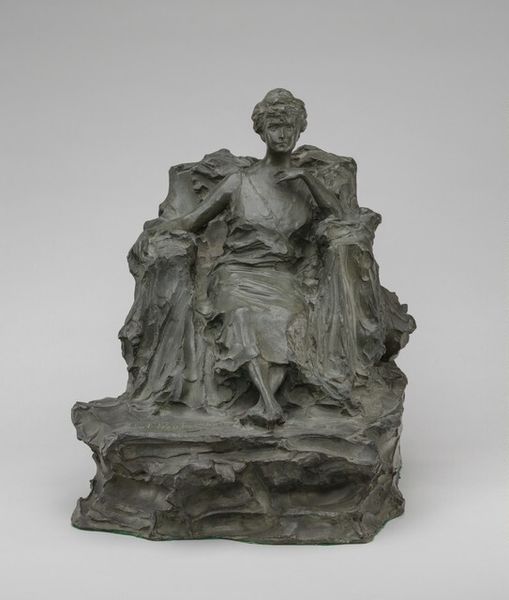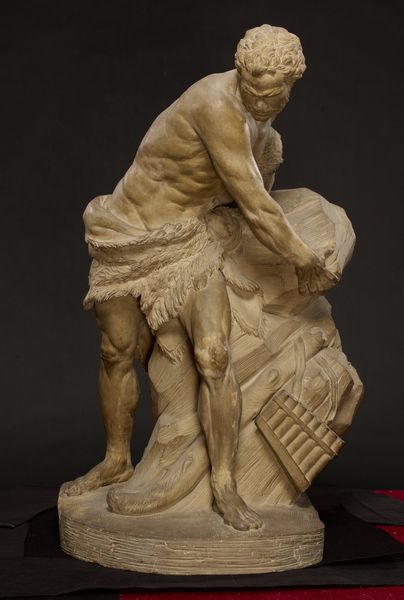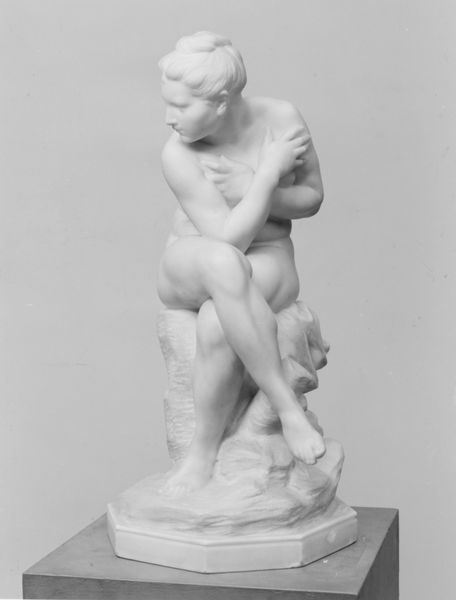
alabaster, bronze, sculpture, marble
#
neoclacissism
#
sculpture
#
alabaster
#
bronze
#
figuration
#
classicism
#
sculpture
#
genre-painting
#
history-painting
#
marble
#
realism
#
statue
Dimensions: height 33.5 cm, width 18 cm, depth 26 cm, height 37.5 cm, width 29.4 cm, depth 35.3 cm
Copyright: Rijks Museum: Open Domain
Editor: This sculpture, “Moeder en kind,” Mother and Child, dating from 1800 to 1905, by Eugène Lacomblé… It’s so serene. The draped fabric and tender gaze really draw me in. What do you see in this piece? Curator: Oh, it's interesting, isn't it? I’m immediately drawn to the interplay between the realism of the figures and that Neoclassical stillness. It reminds me a bit of Canova, actually, but softened, more intimate. And that choice of material—perhaps alabaster or marble—adds to the delicate, almost ethereal quality. It invites a quiet contemplation, don’t you think? But is it idealized beauty, or a genuine emotional connection that resonates? Editor: I agree, there's something almost... distant about the mother’s expression, even though the gesture is tender. Does the contrast between the material and subject speak to you? Curator: Perhaps the cold, hard stone suggests the enduring nature of maternal love—that’s the classic read. But maybe there's also a tension there, a friction between the ideal and the real. Like, “Yes, this is eternal love, but also, being a mother is *really hard*.” See what other pieces you can see similar tension portrayed. What did you take away from the piece, yourself? Editor: It’s helpful to hear how these art historical contexts nuance what seems like a straightforward image. I'm going to look into comparable sculptural approaches to the period. Curator: Exactly! That's the beauty of it, isn’t it? An artwork can be both beautiful *and* challenging, a source of comfort *and* a prompt for critical thinking. Always trust what speaks to you personally and it will guide your learning.
Comments
No comments
Be the first to comment and join the conversation on the ultimate creative platform.
